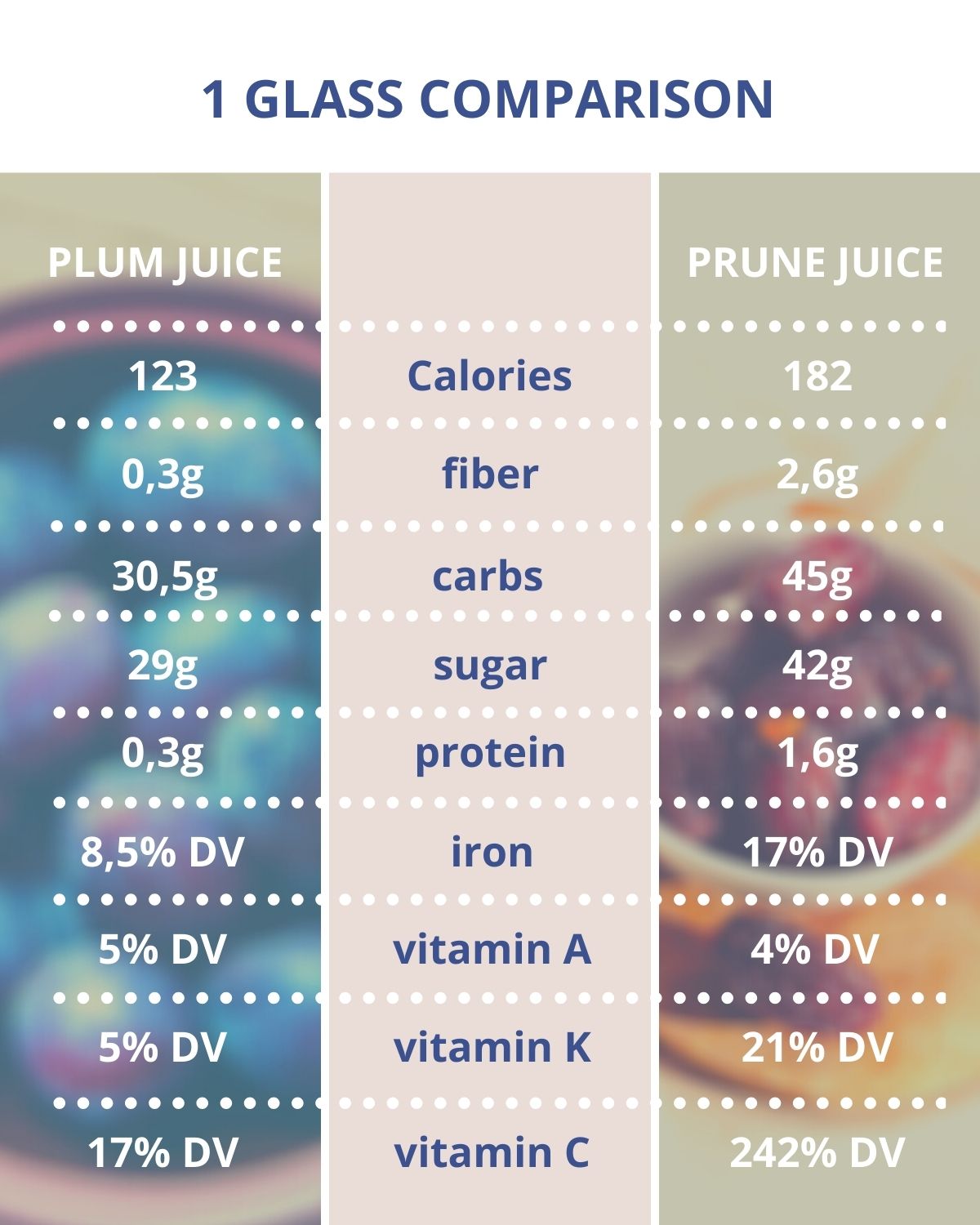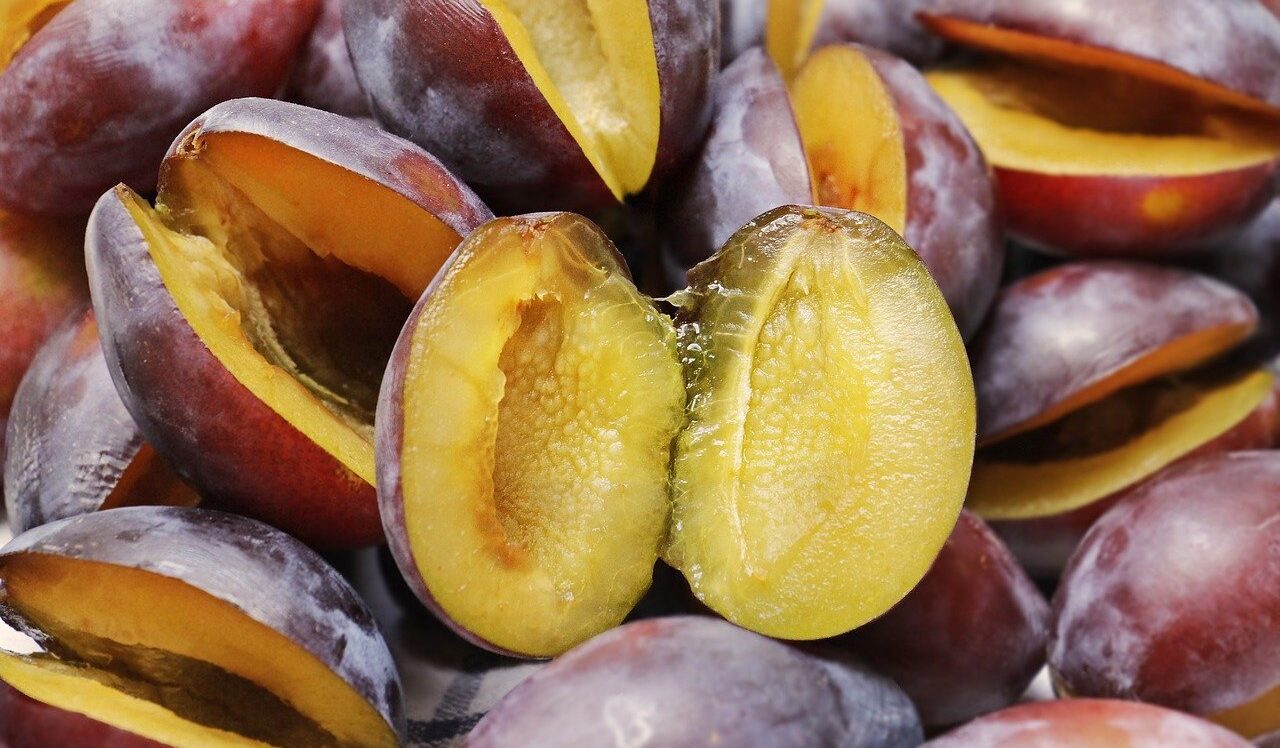1. Plum juice benefits
Plums are a great source of antioxidants and fiber. They contain vitamin C, A, K, and E, which is very rare in fruits. Plums are rich in valuable minerals like calcium, magnesium, iron, phosphorus, and potassium. Because of vitamins B, this fruit has a calming influence on your nerve system and can also improve your well-being.
Fresh plum has a great impact on your digestive system. Pectineus, which are a sort of fiber, work like a shuffle on your digestive tract and clean cholesterol stored in your body cells. Folic acid from plums helps to produce new cells in your body and prevents diseases like cancer and anemia.
One glass of plum juice every day is enough to regulate the work of your digestive system and effectively increase your appetite.
2. Prune juice benefits
Prunes contain many nutrients and are considered high fiber fruits. They also regulate the digestive system, helping you with hemorrhoids caused by constipation.
The prune juice is good for both bladder and bowels. It helps to build strong muscles and bones, thanks to boron. It can also effectively reduce cholesterol and blood pressure level.
It contains a lot of vitamins, like A, K, B6, and minerals such as magnesium and copper. The high iron level makes it perfectly suitable for vegetarians and those who suffer from anemia.
However, you can have too much of a good thing also. That is why you need to be careful not to drink too much prune juice or eat too many of them, because it may have a laxative effect on your body (due to high sorbitol content). Unless chronic constipation is your problem and the purgative effect is needed, excessive amount of it may cause gas and stomach ache, especially to infants.
Adding prune juice into your diet can help you with losing your weight, but consuming too much of it can cause the opposite effect. 5-8 ouce of this juice on a daily basis is a norm for an adult.
3. Plum vs prune
Prune is simply a dried plum. Owing to the high sugar content, plums can be easily dried without starting a fermentation process. Plum after drying gets sticky and chewy. It gets a deep sweet flavor.
The main difference between plum and prune is that the second one has a lot more nutritional properties and vitamins but is almost five times higher in calories than fresh plum. The sugar level in prune is much higher than in plum. Prune is richer in vitamin A, K, B6, fiber, iron, phosphorus, potassium, niacin, and riboflavin. Below you can see nutritional comparison between plum and prune juice.

DV – daily value
4. How to make a plum juice

- Take 6-7 plums.
- Place them in the pot with water till immersed level.
- Boil it for a few minutes then reduce the heat and cook until fruits will become soft.
- Take it off the heat and cool.
- Take out the pits and blend the rest.
- Add a glass of water or more depending on the consistency you want. Mix it and add a few cubes of ice.
- Enjoy your refreshing drink!
You can also try to juice the plums with a masticating juicer, but in that process, you lower the fiber level in them. It is recommended to blend plums instead of juicing them to preserve more of its health properties.
5. How to make a prune juice

Preparing prune juice is very easy. All you need to do is to drain a cup of prunes in five cups of water. Leave this mixture for the night and drink the juice from it the next morning on an empty stomach.
The other way to prepare juice is to add hot water to prunes and leave it for 24 hours. After that time blend it until you get a smooth consistency.
You can add a few drops of lemon to your juice to improve its taste.
Remember to buy the prunes from a proven source. The best option is organic fruits without nitrates and other harmful substances.
6. Possible side effects of plum and prune juice
When consumed in excess, plums and prunes may upset your digestive system. To prevent the side effects, like flatulence and gas, diarrhea, or constipation, it is advisable to add them into your diet slowly.




Recent Comments